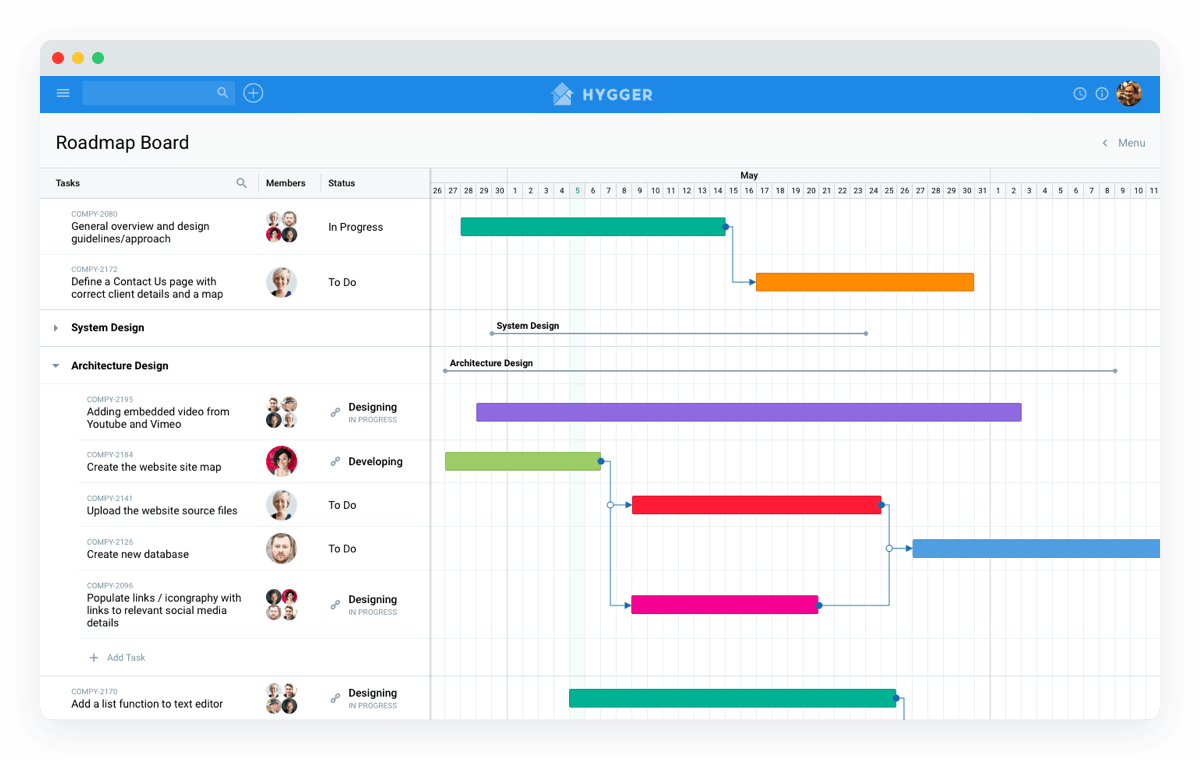
Project Scope is the part of project planning, which includes the identifying and documenting specific goals, tasks and project deliverables. Costs and deadlines are also documented here. Documentation of the Scope is called a Scope Statement. (Do not confuse a project’s scope statement with its charter – simply documents that the project exists).
5 pm process groups are typically defined in project management. Each can be managed and visualized with the help of a powerful project management tool. Hygger has a full set of features and options to do it professionally.

First, you need to initiate your project. Initiation is the first phase in the project management lifecycle that means starting up a new project. You define the project’s objectives, it’s scope, purposes, and deliverables. The next steps may be connected with hiring your project team and setting up the Project Management Office (PMO).
Project Initiation is rather crucial, as it’s the phase in which you define your scope. Only a clearly defined scope and a highly skilled team lead to success.
The typical attributes and activities for this phase are: a project proposal, scope, WBS, project schedule with milestones and deadlines, responsibility assignment matrix, business needs analysis, review of the current operations, financial analysis, project charter with all costs and schedules, SWOT analysis.

After the initiation phase, it’s time to plan your project in details. At this stage, managers care about planning time, costs and resources to effectively manage risk during project execution. To be successful at this stage, project managers must: choose the appropriate pm methodology, create a scope statement, gather a planning team, identify deliverables with the activities required to complete them, estimate the resource requirements, time and costs. Risk planning is also critical.
Plan and execute in the same place with Hygger.io. Using the platform, you can work on your projects in the same place and create your dynamic planning. You may use Hygger roadmap to visualize all your plans and schedules.

Teams must know exactly what are the planned terms that need to be executed. The production phase that is also called implementation ensures that the project management plan’s deliverables are executed accordingly. During the execution, project managers care about team coordination, management of human resources, proper allocation, budget, and other issues.

Monitoring and controlling phase involves processes performed to observe execution. Potential problems in a timely manner can be identified and corrective actions may be taken. This phase involves measuring the ongoing project activities, monitoring the project variables and identifying actions to address risks properly.
The process of monitoring becomes easier with the help of convenient Hygger boards, columns and cards.

Closing means the formal acceptance of your project. You archive the files and document lessons learned. The closing phase includes contract closure, project close and the post-implementation review.
This phase is important for the team to learn from experiences and apply to future projects.
I like Hygger because it is really easy to use. Any user can start using it immediately with a very short learning curve. You can find in Hygger the main characteristics for agile methodologies like kanban and scrum. You don’t have a limit to create projects or dashboards, so it fits perfect for small companies to the big ones.
Lots of useful features that cannot be found on other products, like WIP limits on the Kanban board, the value chart on the backlog and the integration with third-party applications. The support team can solve any problem, they are the best.
Hygger offers lots of great features. Some of my favorites are swimlanes, time tracking, and scorecards. They have everything you need to manage in agile or even more complex approaches. The support team is also wonderful and always ready to help.
Read more reviews on GetApp, Capterra or alternativeTo